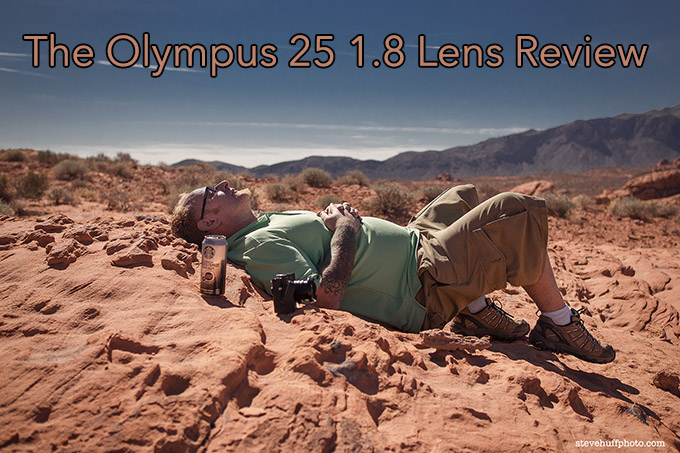
The Olympus 25 1.8 Lens Review on the E-M1
By Steve Huff
Hello once again to all of you camera crazy readers! Today I am going to talk about the new-ish Olympus 25 1.8 lens as it has recently shipped and is really the only Auto Focus competition to the now legendary Panasonic 25 1.4 lens, which has been known as one of the finest lenses for the Micro 4/3 system. That lens, on SOME cameras, has been known to have slower focus and a “rattlesnake” sound when just attached to the lens with the camera being powered on. (On the E-M1 I do not hear this effect though). The new Olympus is smaller, sleeker, focuses faster, much shorter with hood attached and comes in at $129 less than the Panasonic counterpart.
But how does it stack up to the Panasonic? Well, I will tell you right off the bat that while it is not as sharp as the Panasonic, it gets about 99.5% there. It does not have the Micro Contrast of the Panasonic, but gets us about 90% of the way there. It vignettes slightly when wide open where the Panasonic does not but it does focus slightly faster and like I said, it is quite a bit smaller as you will see below in the size comparison.
On the Las Vegas strip at f/2.5 with the Olympus 25 1.8. If you click this image you can see a larger size that is much sharper. In fact, it will show you just how sharp the lens is. I converted this one to B&W.
Over the years I have grown fond of certain lenses for the Micro 4/3 system. The Panasonic 25 1.4 is one of them while others like the Olympus 45 1.8, 75 1.8 and even 17 1.8 are up there as well with me. The 60 Macro is astonishing and the 12mm f/2 is one I really enjoy. The new 12-40 Zoom seems pretty versatile and incredible as well. I’d say my #1 most used lens on my E-M1 is the 17 1.8. For me, it has the sharpness, the detail, the color, and the “feel”. I love it but I also have been enjoying the 35mm (equiv) focal length more lately.
Shot at f/1.8 this is close focused and right out of camera. Bold bright color and sharp with a pleasant Bokeh. Click it for larger/sharper!
The Micro 4/3 Version of a 50mm explained
I go in phases between the 35mm and 50mm being my #1 fave to shoot with and these days it is 35 all the way, so when out shooting with this 25 (50mm equiv) I was once again having to get used to shooting this focal length. After a solid few days of shooting with it daily I remember what it is that makes it my #2 favorite focal length! It has the perfect mix of sharpness and shallow DOF possibilities. While this is indeed a true 25mm lens, and we will get 25mm DOF from the lens, the focal length appears as a 50mm. So imagine the Olympus 25mm as a 50mm with 25mm Depth of Field and “Bokeh”. Due to the shorter focal length we will not get subject isolation as we will get on a real 50mm. It will give us 25mm DOF and isolation and yes, f 1.8 is a true f/1.8. Just on a 25mm lens.
At the end of the day though, a 25mm acts like a 50mm for focal length/magnification so this is what you are going to see when looking through your viewfinder. It will not be like when you put a 24mm on your full frame camera, but like when you put a 50mm on your full frame camera except for the Depth of Field control. Basically, on Micro 4/3 we are magnifying that 25mm to give us a 50mm field of view.
Other 25mm lenses include the Panasonic 25 1.4, which is one of the highest rated 25mm lenses for Micro 4/3. We also have the amazingly good, and one of my all time manual focus faves, the Voigtlander 25mm f/0.95 which allows you to focus close, get almost full frame quality Depth of Field and Bokeh, and is built like the Voigtlander lenses for the Leica system.
One of our workshop attendees taking a break in the middle of the desert with his Starbucks and Leica M 🙂
As always, speed costs and in Micro 4/3 is no exception. The Olympus 25 1.8 costs $399, the Panasonic is $529 and the Voigtlander will run you a cool grand.
You can see my Panasonic review HERE and some Voigtlander shots are HERE.
At the Valley of Fire with Todd Hatakeyama (Master Organizer – foreground) and Pro Photographer Extraordinaire Jay Bartlett (Background)
Just as with my other Micro 4/3 lens reviews, there is not much to say about the lens. I mean, when a lens is sharp, focuses fast and is small, light and beautiful in design what can you say? It really has no faults so all I can do is write about what I feel when it is compared to the Panasonic 25 1.4, the lens who reigns supreme in this focal length for this format. I already did ONE quick comparison while out on the road (which is why it was quick) so let me go into more detail about this lens VS the mighty Panasonic.
This is an OOC JPEG from the E-m1 and 25 1.8 shot at 2.5
The Olympus 25 1.8 vs the Panasonic 25 1.4
- Cost. The Panasonic can be bought HERE for $529. The Olympus can be bought here for $399. So, the Olympus is $129 less expensive than the Panasonic. Makes sense because the Olympus is an f/1.8 lens vs an f/1.4 of the Panasonic. So for cost, and bang for the buck, the Olympus wins.
- SIZE. The Panasonic is quite a bit larger than the Olympus when the hoods are attached (see below) but the Panasonic is still a very small lens. Only when viewed next to the Olympus does it look large. The Olympus is super small and light where the Panasonic is wider, taller and has more bulk. The Olympus almost appears to be half the size when looking at the image below. So if small size if your thing, the Olympus wins.
- Sharpness. BOTH of these lenses can render a super sharp image. BOTH have slightly different color and contrast signatures though. I would say that the Olympus is just as sharp as the Panasonic..well, 99.5% as sharp when both lenses are shot at 1.8. I’d say the Panasonic has a little bit better Micro Contrast though as when looking at some real world street shooting files on my 27″ display I see it. This is a sign of a very good lens, and is one area where Leica excels with their uber expensive lenses. For example, the Leica 50 Summicron f/2 has amazing micro contrast and one of my all time favorite Leica lenses for the M system (or Sony A7). The Panasonic 25 1.4 is a Leica/Panasonic collaboration so it shares some of that Leica magic. I used to think it did not but it does indeed though not to the level of true Leica glass. The difference is not huge between the Panasonic and Olympus by any means but you can see it when pixel peeping. So because of this, For overall performance and sharpness, the Panasonic wins.
See the full size files below from each lens at apertures from 1.4 to 1.8 to 5.6..the Panasonic does not appear to be any sharper than the Olympus here:
–
Now the Panasonic wide open at 1.4, which the Olympus can not do..
–
and both stopped down to f/5.6
- AF Speed. When out on the street shooting these lenses I though for sure that the Olympus would smoke the Panasonic with Auto Focus, and that was not the case! Both lenses focused fast on my E-M1, and to be 100% honest, I saw no difference in speed when out in the street at night using both. The Olympus may have a slight edge overall, but it is not a night and day, and for some will not even be noticeable. Remember though, this is on the E-M1 which may be helping the lenses to focus fast. So I give this one a Tie with a SLIGHT edge going to the Olympus.
- Bokeh. Well, if Bokeh is what you are after (and many Micro 4/3 shooters are indeed after this) then you will want the Panasonic as it is an f/1.4 lens. While not much of a difference at all, there is indeed a mental difference going on in that head of yours and if speed is what you need then you will not be happy with the f/1.8 of the Olympus. Nope, go for the Panasonic! If speed is not of great concern and you realize that f/1.4 is not a huge step up from f/1.8 then the Olympus may be just the ticket. In reality, when the Panasonic is shot at f/1.4 you will not see much more background blur than the 1.8 of the Olympus. It exists but will you see it? Maybe, maybe not. Both lenses rock this. Panasonic wins here as it has the ability to create MORE shallow DOF and Bokeh.
- Distortion and CA. The Panasonic has more CA (Purple Fringing) than the Olympus, which is clear and evident. So for this the Olympus wins. See the crop below from each lens.
So at the end of the day BOTH of these lenses will deliver the goods. Me, I prefer the Olympus as I am not losing much at all over the Panasonic but I am gaining the small size, the nice price and the overall look that matches my other Olympus primes AS WELL as almost no CA issues. I could live with EITHER lens long-term. It comes down to if you want small size, slightly faster AF, and f 1.8 or if you want larger, faster aperture at 1.4 and slightly slower AF while paying $129 more.
If you own the Panasonic, keep it. If you do not own either, you can save money and be 100% happy with the Olympus. If you want the Olympus you can sell your Panasonic for as much as it costs to buy the new Olympus. In other words, there is no wrong choice here. Both lenses are fantastic. Those who are putting down the Olympus (and I have already seen it on forums and right here on the comments of this website) are just those who own the Panasonic, never tried the Olympus and are sticking up for their brand. BOTH lenses are wonderful and both will give you the tool you need to express your photographic vision. I have to hand it to Olympus for constantly releasing new amazing lenses. This is another one they can add to the premium list of primes that help make the Micro 4/3 system so enjoyable! Keep ’em coming Olympus AND Panasonic! PLEASE!
WHERE TO BUY?
You can order the Olympus 25 1.8 at Amazon HERE or at B&H Photo HERE.
PopFlash also sells the lens here.
This lens has a 46mm filter thread so using my favorite ND filter is possible with this one!
A few more shots with the Olympus 25 1.8 Lens
PLEASE! I NEED YOUR HELP TO KEEP THIS WEBSITE RUNNING, IT IS SO EASY AND FREEE for you to HELP OUT!
Hello to all! For the past 5 years I have been running this website and it has grown to beyond my wildest dreams. Some days this very website has over 200,000 visitors and because of this I need and use superfast web servers to host the site. Running this site costs quite a bit of cash every single month and on top of that, I work full time 60+ hours a week on it each and every single day of the week (I received 200-300 emails a DAY). Because of this, I need YOUR help to cover my costs for this free information that is provided on a daily basis.
To help out it is simple.
If you ever decide to make a purchase from B&H Photo or Amazon, for ANYTHING, even diapers..you can help me without spending a penny to do so. If you use my links to make your purchase (when you click a link here and it takes you to B&H or Amazon, that is using my links as once there you can buy anything and I will get a teeny small credit) you will in turn be helping this site to keep on going and keep on growing.
Not only do I spend money on fast hosting but I also spend it on cameras to buy to review, lenses to review, bags to review, gas and travel, and a slew of other things. You would be amazed at what it costs me just to maintain this website. Many times I give away these items in contests to help give back you all of YOU.
So all I ask is that if you find the free info on this website useful AND you ever need to make a purchase at B&H Photo or Amazon, just use the links below. You can even bookmark the Amazon link and use it anytime you buy something. It costs you nothing extra but will provide me and this site with a dollar or two to keep on trucking along.
AMAZON LINK (you can bookmark this one)
B&H PHOTO LINK – Can also use my search bar on the right side or links within reviews, anytime.
You can also follow me on Facebook, Twitter, Google + or YouTube. 😉

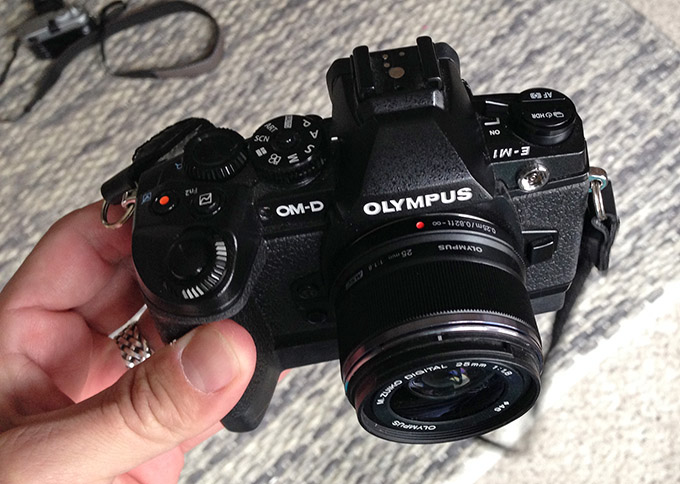
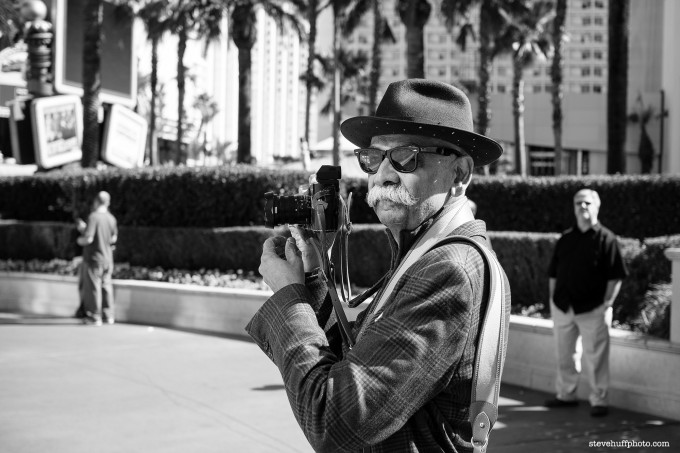


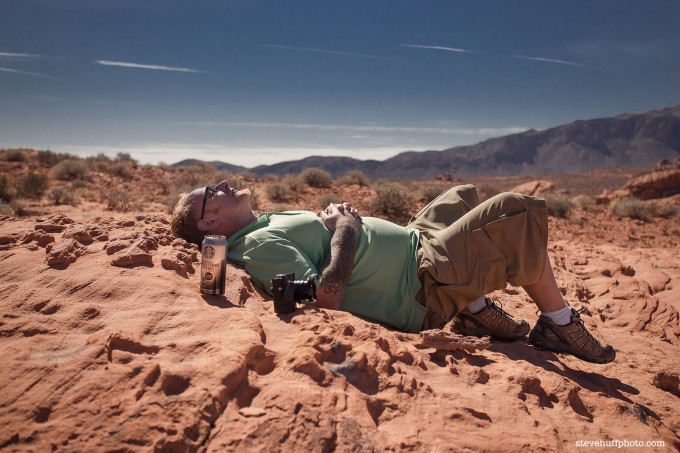
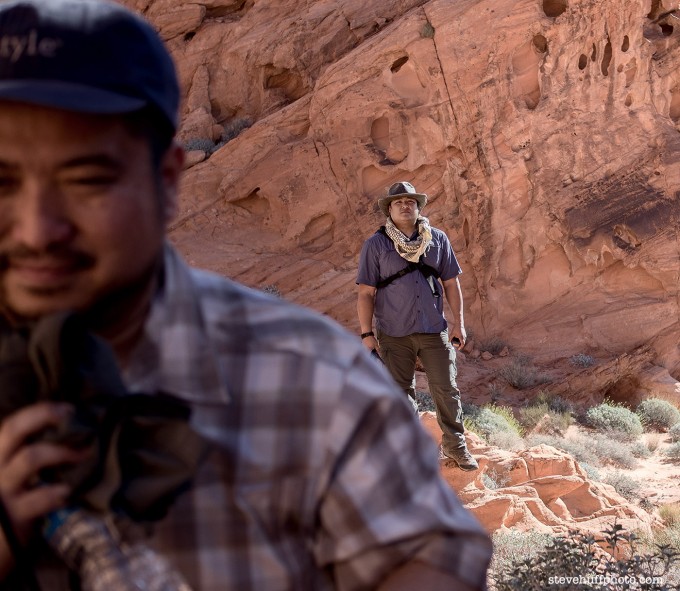


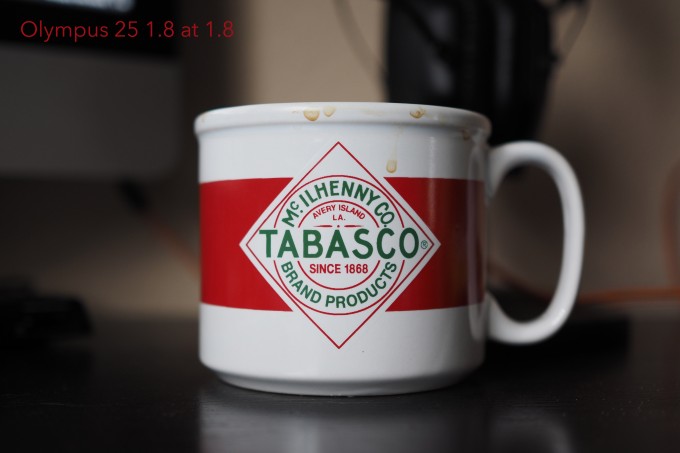
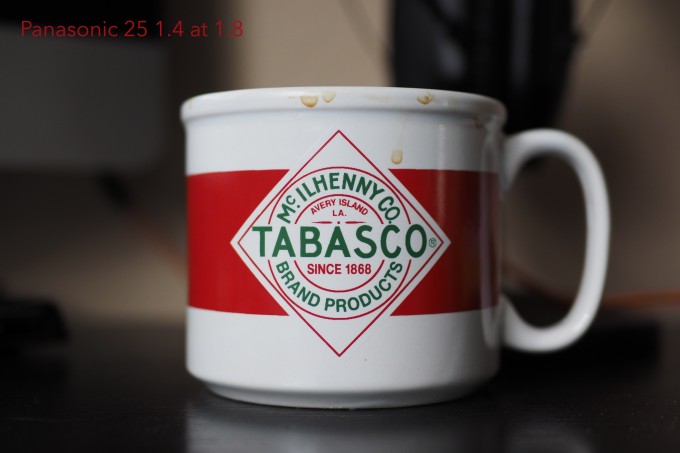
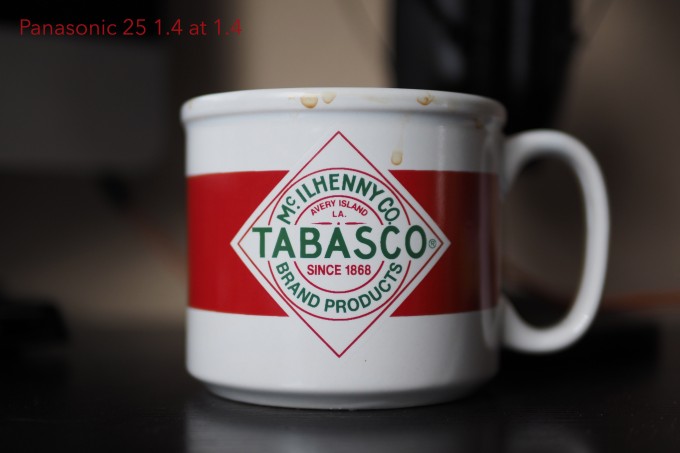
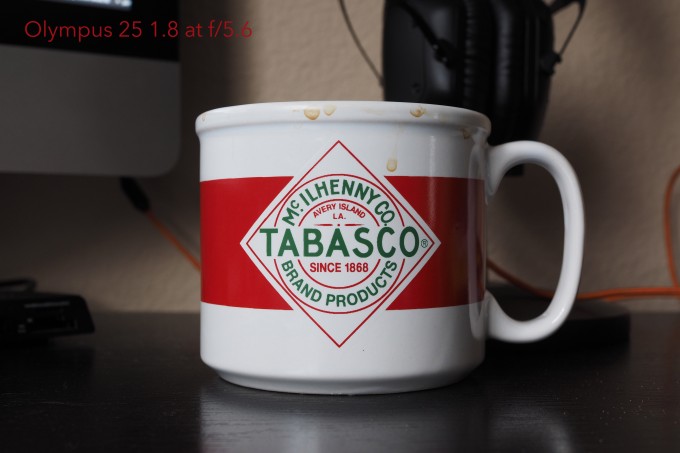
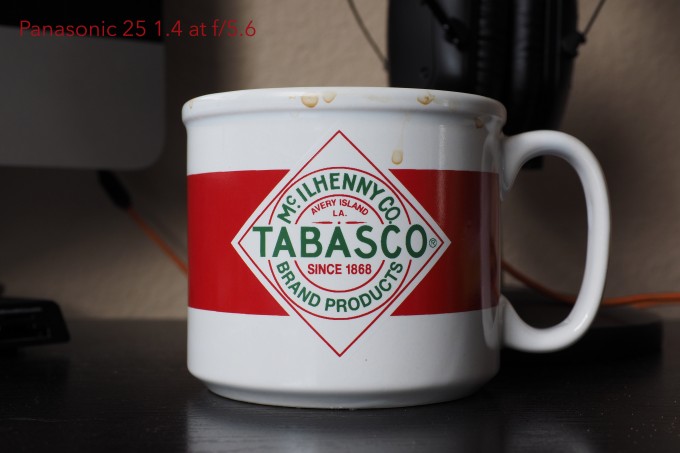
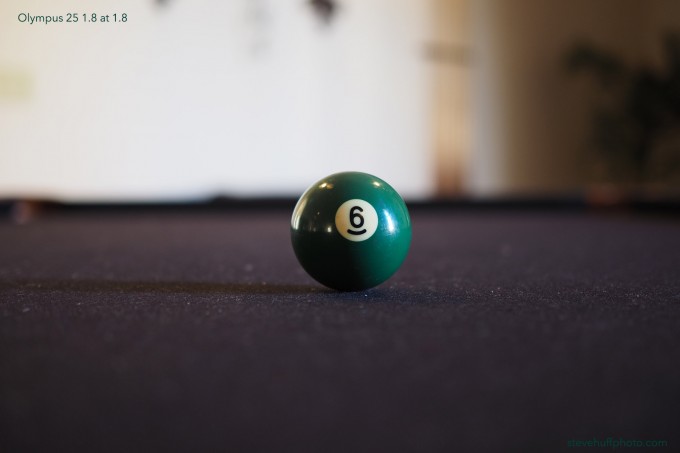

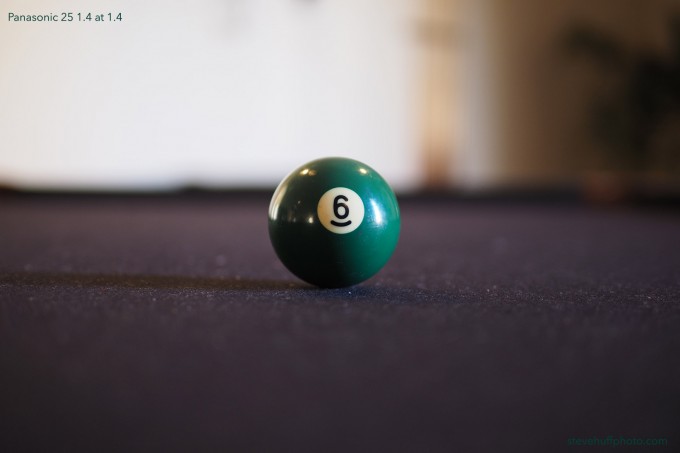
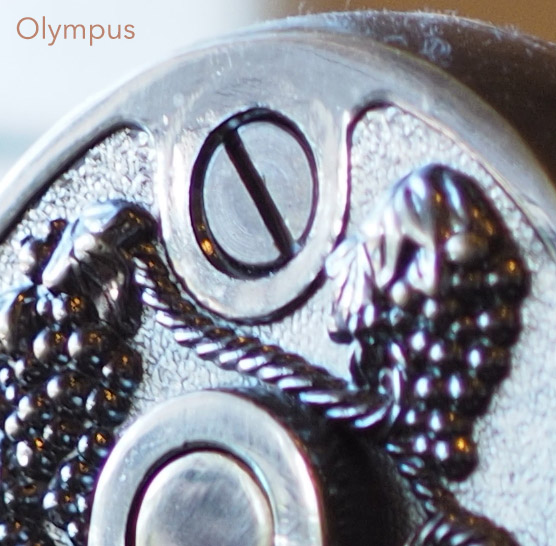
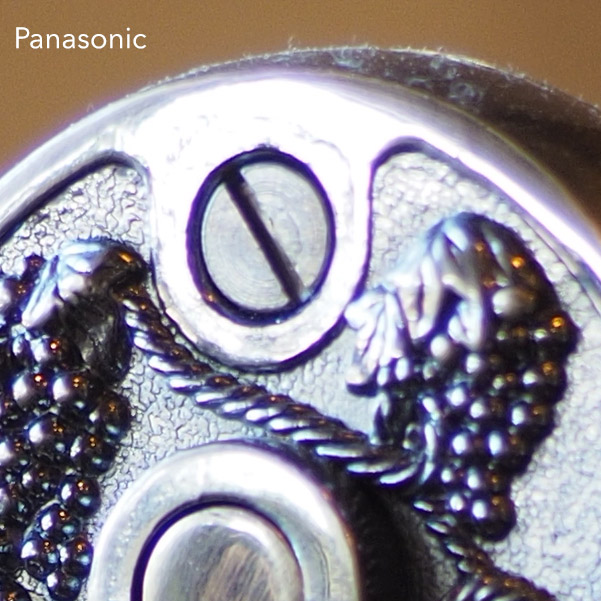


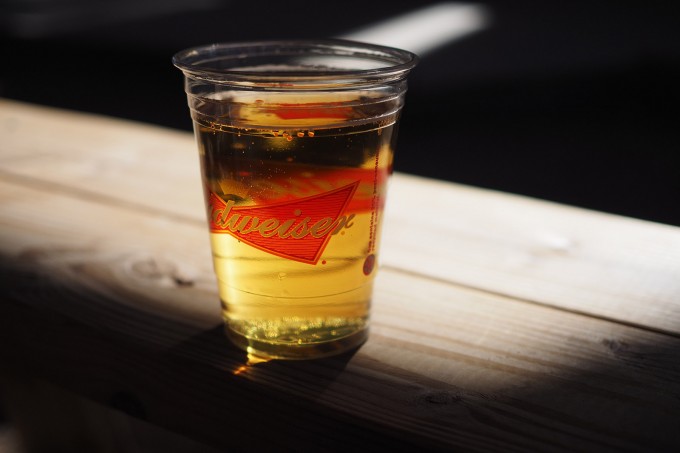




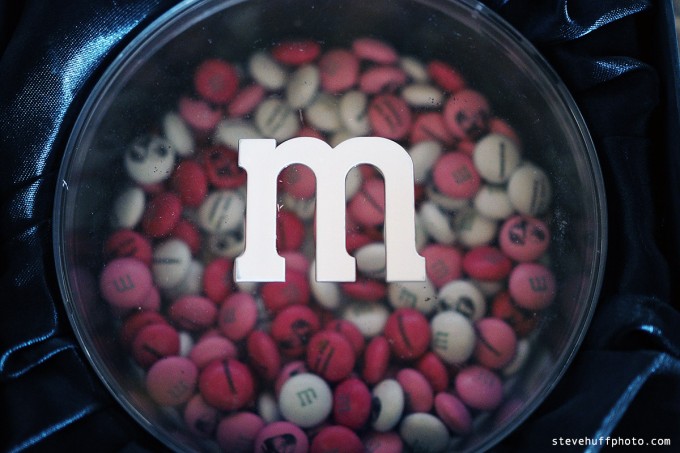


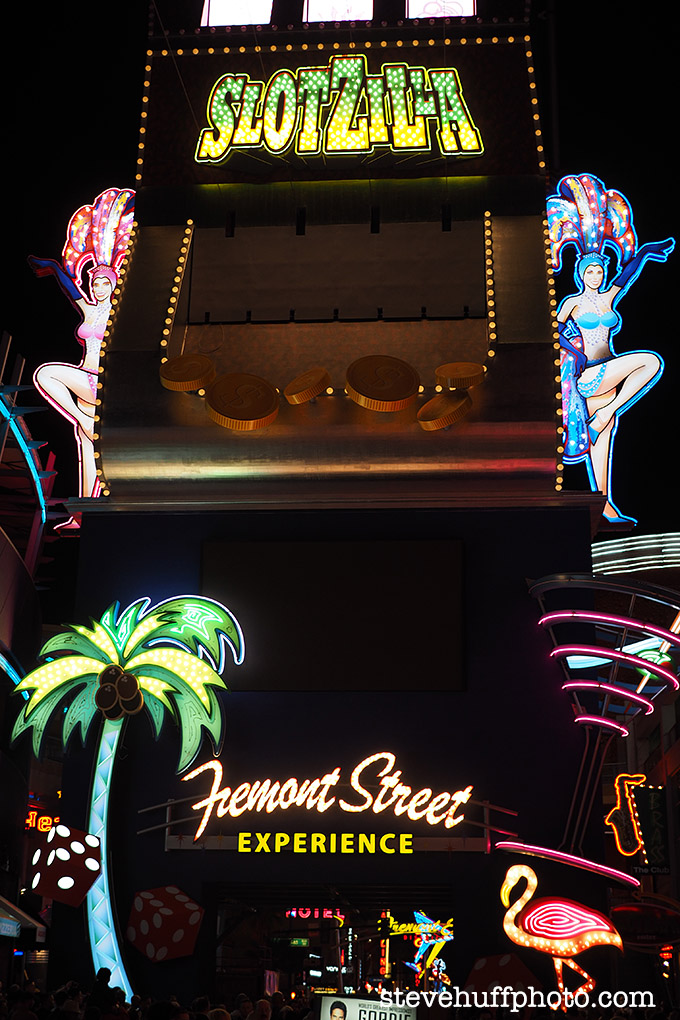
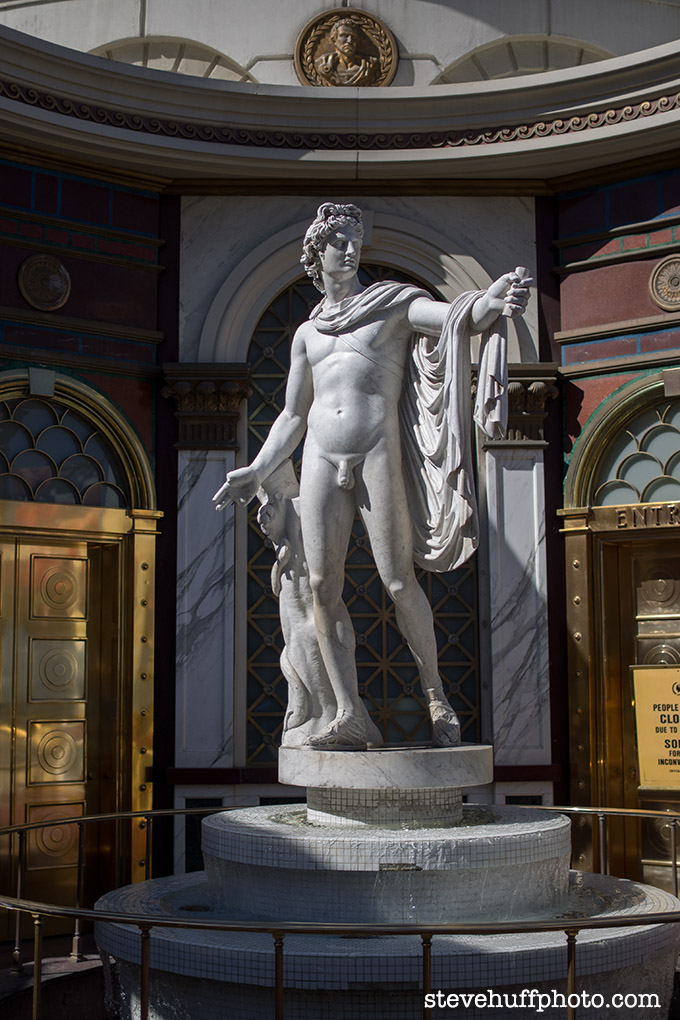




Great review Steve! I currently own Olympus’s bigger brothers – 45mm 1.8 and 60mm 2.8 macro which I LOVE – and I had a hard time choosing between the 25mm Olympus and the Panasonic. The guys from my local shop recommended me the Panasonic but I just wanted to know how it does compare with the Olympus and I’m really glad I found your article! Judging from your review there are a quite a few advantages to pick Olympus over the Panasonic 😀 :D. And guess who’s review helped me buy the 60mm Olympus a while ago? 😛
I love it! Excellent article. I had a good experience filling forms online and happy to share it with you. You’ll forget about paperwork when you try PDFfiller. NY DTF CT-34-SH can be filled out in 5-10 mins here
http://goo.gl/9ifYh2.Thank you for a nice review! You are comparing the Pana/Leica 25mm with the Olympus and you say that the sharpness is about the same but the Pana/Leica has more micro contrast. In MTF-tests they are almost identical and the Olympus is a little better at the edges. At full opening they vignette about the same but at F2 the Panasonic is better. I guess that’s what you have to pay for the smaller format of the Oly. I think both are superior lenses but I will substitute my Pana/Leica with the Olympus because of the smaller format and that it’s possible to focus 50 mm closer. I don’t think you mentioned that.
If you go by Lenstip’s MTF (they have well done tests), once you get to f2, the Panasonic is sharper in the center. By 2.8-4.0, the Panasonic is sharper in both the center and edges. By f/4, the Pany’s edges nearly reach 70 lpm, close the the max center resolution of the Olympus lens.
http://www.lenstip.com/401.4-Lens_review-Olympus_M.Zuiko_Digital_25_mm_f_1.8_Image_resolution.html
http://www.lenstip.com/314.4-Lens_review-Panasonic_Leica_DG_Summilux_25_mm_f_1.4_ASPH._Image_resolution.html
It’s true the 25 1.4 doesn’t focus all that close, maybe 11 inches, typical for a fast 50.
To Markus Arike:
I don’t exactly understand your point. Both are very good lenses and the optical quality is very similar. Lens Tips test shows that the Olympus has more even sharpness at f2 and 2.8. the Panasonic is better at f4 and at smaller apertures. There are variations between different samples of a lens and there are different methology between different testers of lenses. http://www.photozone.de/m43/886-oly25f18?start=1 and http://www.photozone.de/m43/886-oly25f18?start=1 shows that the Olympus is more even over the field.
I think the differences between these two lenses are rather small and for me the smaller format of the Olympus overwheigs the eventual better center sharpness of the Lumix lens. I don’t think you will see this in practical use.
Hello Steve
Just a quick observation… The CA on the panasonic lense seems to disappear when used with a panasonic body. Worth checking out on say the new GX8
Dear Steve,
Panasonic 20mm f1.7 vs Olympus 25mm f1.8 : If you want a lens in this focal length range? (Panasonic is quite pocketable) ? Thanks!
Dear Steve,
Panasonic 20mm f1.7 vs Olympus 25mm f1.8 : If you want a pocketable lens in this focal length range? (Panasonic is quite pocketable) ? Thanks!
On CA and purple fringing – Olympus bodies correct for this only on Olympus lenses and Panasonic bodies only for Panasonic lenses, so a Panasonic user would see the opposite results to yours. If you shoot RAW, of course, CA and purple fringing can be removed easily in your RAW converter…
Love the sharpness of the Olympus 25mm but just came back from a shoot where I needed to manual focus on a small bloom in the center of a large shrub. Where is the manual focus access? The 17mm has that wonderful sliding ring. Help
Hi, Steve. I just stumbled on this review and I’m a bit confused by what you say here.
“Due to the shorter focal length we will not get subject isolation as we will get on a real 50mm. It will give us 25mm DOF and isolation and yes, f 1.8 is a true f/1.8. Just on a 25mm lens.
At the end of the day though, a 25mm acts like a 50mm for focal length/magnification so this is what you are going to see when looking through your viewfinder. It will not be like when you put a 24mm on your full frame camera, but like when you put a 50mm on your full frame camera except for the Depth of Field control. Basically, on Micro 4/3 we are magnifying that 25mm to give us a 50mm field of view.”
The thing is that that’s what your photos are saying. There’s nice subject isolation in them. Am I missing something here?
This lens gives you the subject isolation of a 25mm 1.8 lens. So if there were a 25 1.8 for full frame, this is the isolation you would get. But it is not nearly the isolation you get from a 50 1.8. The longer the focal length, the more isolation you can get.
So while this is a 25 1.8 lens, it acts like a 50 1.8 lens (1.8 for light gathering which is what aperture is). Those who say this is a 50 3.4 or whatever are wrong, it is a 25 1.8 with an equivalent view of 50mm (since Micro 4/3 has a half size sensor) and a true 1.8 aperture giving you the isolation of a 25 1.8.
Hi Steve, I sold my 20mm and got a 17mm, but now I also have the opportunity to grab a 25mm f1.8, would you recommend doing so? I like to take portraits. Cheers
Selling my trusty 20mm 1.7 for the Olympus 25mm 1.8. As much as I enjoy the 20mm, that darn banding on my EM-5 is a bit of a pain. Thank’s Steve for your review.
Hello. Thanks for great review. I had Panasonic 25mm but when I tried Olympus I sold my old good Panny =) The reason is watercolor-look bokeh
Steve for someone who owns the 12mm, and the 45mm lenses would you buy the Olympus 25mm over the Olympus 17mm lens?
Thanks. .
I would buy the 25 1.4 over the Olympus. When it comes to the 20 1.7 and the Olympus I prefer the Olympus.
Amazon link saved. I didn’t know I can use your link to purchase anything (thought just camera/lenses etc.) so I will do from now on and will encourage friends to as well. Always enjoy reading your site and will do my bit to keep this going! Keep up the good work Steve 😀
Thanks for the timely review! I was looking for a nice fast fifty for my GM1 and was delighted to see this little gem at amazon. Perfect size for my tiny camera.
Thank you so much for this wonderful article. I’m really torn between the Olympus1.8 & the Panasonic1.4 – As you’ve clarified in your article, there are pros to both choices. One thing I’d like to see is performance comparisons in low-light situations. Will the Pan1.4 win in performance in low-light, do to the f-stop difference? As I’ll be using this lens for a variety of shooting situations (well-lit & low-lit), this will be an important factor for me.
Thank you again so much!
I went with the Panasonic 1.4 because I am shoot street shots at night or in Clubs. I am blown away at the speed that this focuses in low light. It will struggle in extreme low contrast conditions but I think most lenses would have a hard time in low contrast anyway. If this is the case I switch over to manual and then after getting the shot go back to auto. I leave the lens at 1.4 for 80% of my shots and only go up to f4 or 5.6 if I run into a daylight shot but that’s rare.
Always pick the lens to match what you shoot most of the time and stick with it.
Great review as always. Mahalo Steve. It’s on my Amazon list…via SHP of course! Almost have all your recommended glass for my EM-1. Just this one and the 75 1.8 to complete the kit.
how about comparing them both on a Panasonic camera? Like a GH3 maybe.
Steve,
Thanks for the great review/comparison. Excellent insight as always! Can’t wait for the 12-40mm review as I’m just waiting for the Stevehuffphoto.com seal of approval before I submit my order!
Thanks again for your hard work.
Great and informative review Steve! But what about AF accuracy between the two? Have been looking at the PL25 for some time but hesitating. I am having some issues with the Pan 20mm om my EM-5 body. Yes, the 20mm is slow to focus but ever so often the camera won’t even get the autofocus “right”. The lens itself is ok though, works great on my older G2 body. Is the PL25 a “safe” upgrade or would it be wiser to go for the Oly 25?
Steve I think we need to tone down the enthusiasm just a bit. I shoot multiple platforms including MFT (E-PM2) and while the PL 25 1.4 is a nice lens, I think it’s just a tad overstated to say it’s legendary. I think legendary is an overused description in the MFT world. Like most lenses it is far from perfect (as you’ve described in this very review) and there are many lenses out there which are comparable (Sony SEL35F18, Fuji 35 1.4) or would eat it’s lunch (ie. Sony 55/1.8).
Nice comparison Steve.
I use the Pana-Leica 25mm (sounds like a cheese) on my EM-1 with battery grip. I’ve got no complaints! I would be keen to see how the GH4 stands up to the EM-1 (pretty well I’d imagine) but I’m saving my pennies for putting the EM-1 into an underwater housing 🙂
Thanks Steve for the ‘much more balanced’ review of the comparison between the Oly 25mm f1.8 and the Panasonic f1.4 (e.g. than Robin Wong’s review). Just as I thought, the Olympus has better CA control, while the Panasonic has slightly better sharpness and micro-contrast (esp. in centre). Oly is smaller and has faster AF (on Olympus bodies?), but the Panasonic seems very fast on my GM1 though. Panasonic has better build-quality, though larger (with huge hood which cannot be reversed!!). Also, I heard the newer Olympus bodies does not correct for CA with Panasonic lenses? Could that be why the CA seems stronger in the comparison above?
Big Mac culture:
more bokeh = good bokeh
more blur = good blur
more big macs better than small plate of 3* michelin food
I would love to see an exact comparison of the Panasonic 25mm f/1.4 vs the Olympus f/1.8 regarding CA with each lens on its respective “native” MFT body. … i.e…..Is the CA corrected in the native camera body for each lens? It is really no big deal to correct it in Lightroom, etc. (I own the Panasonic 25mm and 2 Olympus bodies), but I would be curious to see if there is a difference in the CA rendering “out-of-camera”.
I would love to see an exact comparison of the Panasonic 25mm f/1.4 vs the Olympus f/1.8 regarding CA with each lens on its respective “native” MFT body. … i.e…..Is the CA corrected in the native camera body for each lens? It is really no big deal to correct it in Lightroom, etc. (I own the Panasonic 25mm and 2 Olympus bodies), but I would be curious to see if there is a difference in the CA rendering “out-of-camera”.
Another great review from SH. Thank you.
Thanks for review Steve. Nice to hear that the Panasonic even it’s older focuses fast, this was my main concern about this lens for long time. But for me Oly is the winner, on E-M5 i want more compact lenses and in our country the PanaLeica costs about 45% more than Oly (about 250USD more) which is significat difference.
well said.
Thanks for the great review again Steve!!! One thing you didn’t mention is the difference in minimal focusing distance. Though on paper it’s only a slight difference, but in real world shooting it seems quite a thing!
To me, it looks like the Olympus has better macro contrast, giving a more ‘defined’ look with less haze blocking up the shadows.
Also, the improvement in purple fringing is a big win.
Steve. I’ve noticed the oly is slightly wider than panny. Which one is closer to a true 50mm equivalent ?
The “focal length” of a lens is the distance from the nodlal point to the sensor plane. If you simply put the camera on a tripod, the sensor plane stays the same, but the nodal point will change. That explains the difference in angle of view.
Also, “50mm” as a convention is just that, a number. The Leica Summicron 50mm DR is actually 51.9mm, and a Soviet Jupiter-3 is 52.4mm, and yet both were marketed as “50mm.” It wouldn’t surprise me either if the Panasonic 20mm was actually 19.nnn mm either, but I don’t have numbers for that one!
Steve, did you happen to notice whether the Olympus suffers from ghosting flare at all? I get plenty of nasty purple flare with my Panasonic 25/1.4 on the E-M5 when shooting wide open at night, especially when bright light sources are included in the frame. While I prefer the rendering of the Panasonic, if the Olympus resists ghosting better then it really might be worth switching.
Thanks.
Your comment about the Distortion and CA for the P/L 25mm is misleading. Sure, it may show up on Olympus Bodies, but the Distortion and CA is automatically taken out in Panasonic Lumix Bodies. There’s little if any at all!
If you really want to judge, put the P/L 25mm on a GX7 and the Olympus 25mm on the E-M1 and you’ll see a BIG difference.
That is why this review is titled “Olympus 25 1.8 review ON THE E-M1, which is the most popular M 4/3 camera out, so what most people will be using the lenses on. But this review is with the lenses on the Olympus body.
Not realistic because I think most users are going to own either an olympus or panasonic camera, and be choosing from an oly or panasonic lens. A bunch of Panny users will no doubt buy this Oly 25 and plenty of Oly shooters are using the Panny 25.
Makes no real sense to pair a given lens with a specific body just for the sake of the review because its not like people are going to go get a GX7 and sell their EM1 just because they want the Panny 25mm.
Besides, the distortion and CA technically still are there and a part of the lens, they simply are corrected for in the Panny body. Net result is it removes it pretty well, but optically the lens has some distortion.
I do not own a Panasonic Body as they do not make any I like enough to buy. I use the E-M1, and most M 4/3 shooters use the E-m1. It has outsold the Panasonic bodies by far. I know MANY E-M1 users who use the Panasonic, so to them, this makes plenty of sense. What makes not sense is to come to a review titled “ON THE E-M!” and bitch about it not being used on a Panasonic body. It is what it is, and for those who use an Olympus body, this test shows the results of BOTH lenses on an Olympus body.
“I use the E-M1, and most M 4/3 shooters use the E-m1.”
Incorrect. There are MANY, MANY other M 4/3 cameras out there, Steve. The majority of shooter that use MFT are NOT shooting with an E-M1. It might be the best selling MFT camera since its release…but it has not outsold all of the other MFT cameras combined that have been sold and are in use … by no means is that statement true.
Good, informative, fair review, though!!!!!!
My point…read the title. Thanks 🙂
I read the title. I have no problem with the article …It is very straight forward and clear. I know that there are issues with one manufacturers lenses on another’s camera, etc.
…but this statement that you made above is ridiculous:
““I use the E-M1, and most M 4/3 shooters use the E-m1.”
It is simply not true. I am not a Panasonic shooter with a gripe…I use two Olympus bodies. Most people shooting on MFT cameras are not shooting E-M1’s.
Anyone else like to comment????
I think a lot of photographer are completely happy with their Pen or E5 for functionality. Lets face it the camera body is nothing without a good lens. So spend your money on glass before getting an OMD EM1.
I use an OMD EM5 and think it works great with Panasonic lenses (why do people say Panny are they trying to be cool?).
I am shooting street photography with the Panasonic 20mm and do find it a bit slow so I am very interested in a cost effective fast focusing lens to replace it.
I have a 14mm which is too wide for street and a 45 which is too long for street and give a portrait feel to my shots.
Who gives a rats ass. Look at the PHOTOS.
I don’t think there’s a big difference between a Panasonic or an Olympus camera mounted with these lenses. Of course there will be Panasonic bodies applying some corrections to Panasonic lenses (and viceversa) but it’s something you can do in Lightroom as well.
As far as a lens without distortion, I can only think of an Otus 50mm f1.4: virtually no distortion means huge size.
I have the PL 25 on the E-M1 and it seems a perfect fit size wise. To me the Oly 25 almost looks too small on the E-M1. I think once you have accepted the compromise on size with the E-M1 (i.e. that it is not a truly small camera) there’s less pressure to choose tiny lenses. I’d imagine on a smaller, more pocketable body (maybe E-M10), the Oly would rock, but for me the better IQ and speed of the PL makes it a no brainer. There’s also something intangible about the way the PL renders. If I had neither I’d still pick the PL.
However if Olympus had brought out a premium f1.2-f1.4 25mm with all metal construction like the 75 1.8 (which I absolutely love), I’d probably have been all over it like a rash…
Although I am sure the PL 25 balances lovely on an E-M1, I still think the smaller size lenses have value. As, that way, you can take an E-M1 with say, a 12 f/2, 25 f/1.8 and a 45 f/1.8 and barely notice the weight. If never taking another lens with you, then something like a Sony RX1 becomes super attractive (more so than it is already).
I also definitely prefer the weight/size of a Pana 20mm on my E-M1 compared to the Voightlander 25mm f/0.95.. even though both, ergonomically, fit well.
Just got the EM-1, love the camera, however really difficult time with the menu’s, I really want to be able to adjust Apeture, SS, ISo and EV on the fly, seems the camera wants to go to manual focus grid all the time, nice feature but annoying when I want to control the basic 4 functions.
If you enable the “super control panel” and/or set up the control dials just right, this is all easy.
No need for the menu AT ALL and no need for the Super Control panel either. The E-M1, E-P5, etc are the easiest camera to use menu wise because you never have to enter the menu. Use it as a normal camera and all you need to do is hit the “OK” button at any time to bring up the quick menu and change any setting you wish within seconds. Do not press Menu to change anything, Use the dials, set up your buttons for what you use most or use the OK button.
Of just hit the dual mode switch thing, whatever it is called. So, if in A priority, one dial controls Aperture, other is E. Comp. Flick the switch, and dials control ISO and WB.
I still find it a bit cumbersome compared to Nikon approach of holding down ISO button and twirling the dials, but still works without even needing the quick menu.
Thanks for the comparison to the PL. If I had PL, I would keep it and be happy, but I am interested in the Oly mainly due to smaller size and weight, a great addition to the m43 lens lineup.
Thanks! That tip should have been on the front page of the user guide, now the e-m1 joy factor really kicked in:)
I turn the focus-lock sound off, set sn-raw, and use OK+quick meny. Happy!
Great review and comparisons.
There’s no right answer to which is the best fast 25mm for the MFT system.. they all seem comparable and have their + & -‘s. It just boils down to personal preferences and how much is any one of these lens worth for you to invest in.
I sold my Pany 25mm a while back to 1) fund for a focal length I don’t have covered by my 12-40mm, the 75mm f1.8 & 2) I was considering getting another fast 25mm later if I felt I really needed a fast fixed focal length lens.
Still up in the air considering which 25mm would be good to go with when I’m ready… go back to the Pany 25 (which I previously owned and really liked the IQ)?.. save a bit and get a better corrected lens for my E-M1 by going with the new Oly 25. Both I wish had metal construction instead of plastic.. I still really wished the Oly 25 was metal with the manual focus clutch like on the 17mm (& 12mm & 12-40mm Oly lenses). I imagine the cost would not have been that much and be the same as the 17mm and gladly would pay the extra $99 for the upgrade in construction and MF feature.
The Voigt 25mm is the fastest, but biggest and heaviest due to the f.0.95.. but, you will have best low light and bokeh.. I don’t mind the MF only, the E-M1 has great EVF & focus assist (peaking, magnify) to handle MF easily. I really like the metal construction.. but, am I ready for the added size and weight?.. maybe.. but how about the price?.. I could get the Oly 17mm & 25mm for about as much and have some slower (but still fast) pair of lenses to cover more angles.
It would be nice to see the dof difference of 1.4 vs 1.8 on MFT in a real life situation (not flat background, with some highlights)
distance of ~3 meters at least (because when shooting from a close distance it dosnt matter if the lens is f3.5, the dof would still be plentiful)
thanks!
As I already wrote, I feel too lazy to sell my PanaLeic25mm and buy the Zuiko one. IQ seems almost on paar abd I find the Panasonic not too big to be carried around (it’s my fav focal lenght). I wish the Olympus had a metal contruction, but I understand the need to keep the price low.
If I had a PL25, I’d agree with you – no point changing. For me, coming into it fresh, I think I like the Oly for the smaller size without too much trade off in IQ. I still have the Voigtlander if I really want the wider aperture at cost of size/weight – but I may end up selling it off, depending on how much I like the Olympus.
If I were in you I would keep the Voigtländer and add one of these two AF lenses. As I did with My 17.5mm and added the 17mm f1.8. Today I was in that mood on an isle near Venice, and went there with the Voigtländer.
I think you’re probably right, I’ve got quite an attachment t it, as the lens I have probably used more than any other in m43 (I’ll have to pull the stats out of Lightroom one of these days). It doesn’t help that I am a bit of a hoarder too.
I just borrowed an Olympus 17 f/1.8 last night for an event shooting some dancers. I haven’t pixel peeped yet, but on the E-M1 it’s usage is such a joy compared to the Panasonic 20mm for the faster auto focus. I decided to buy a Fuji X100 instead, as it wasn’t much more than the lens. Even with the new firmware, it has pretty frustrating focus speeds.
I would love to see a photo of this lens on the em1!
I have been waiting for this lens to come out. So will it blow away the 20mm 1.7 for focus speed on an OMD E5?
Great review as always
Hi Steve,
How does it compare to the Panasonic 20mm 1.7? I Know the focal lengths are a little bit different, but I currently own the 20mm and am wondering whether the Olympus is a worthy upgrade.
Cheers
Roland
The 20 1.7 is smaller still, focuses slower and is probably a tad less sharp. But you can not go wrong with either of these lenses. You will get less shallow DOF from the 20 due to the focal length.
Owning both of them its a pretty big difference in FoV between them, way more than you might think of just 10mm equiv. The Panny 20 feels a lot closer to a traditional 35mm than it does a 50mm. It is slower to focus, though not annoying slow, still faster than something like the Sony RX1, but the Oly 25 is simply blazing quick, basically instantaneous. Both are great lens, both are sharp, both are a nice compact size and both are about the same price, but the FoV difference is surprisingly pronounced.
Hi Jeff,
I was actually just wondering about this FOV difference. Given Olympus interpretation is often a bit wider than Panasonic, I thought it might be close enough to the 20mm lens that I would jump on it. But you seem to confirm that sadly, there’s still a big difference. Perhaps is the 20mm a bit wider than usual Panasonic? Sadly for me, I’m not so much into 50mm equiv. and dig that 40mm equiv. much more. After 4 years, I just can’t live with the slow AF anymore.
see my post at dpreview http://www.dpreview.com/forums/thread/3632305#forum-post-53208875
Jeff, Zylvon here is pointing to what I think many of us new m4:3’s are curious about; the FOV on 4:3 compared to 35mm, yes, I understand the basic concept, but there is more to than just the “technical difference in field ov view”, perhaps you (who has all the gear available) could post some shots to give some side-by-side comparisons? Great blog by the way!
Sorry, Jeff/Steve 🙂 I ment Steve…
Great photos and in-depth review. Very helpful. Made me wanting to get this lens.
Bought my complete EM1 set-up based on reviews from your site Steve and used the links you provided to B&H and Amazon to do it. If that’s all I need to do to help out then it should be easy for anyone looking to make a purchase. B&H even gave me close to $100 back in rewards so it’s a win/win. Hopefully Olympus will come out with an ultrawide prime for my landscape use but for now I’m still enjoying my new outfit and learning how to use it (a bit different from Canon) and all your reviews have been insightful. I only have the Oly 12-40 F2.8 and the Pano 45-200 5.6 so I’m still reading your reviews for my prime options.
Thanks!
p40whk – One of the main advantages of the EM1 (in theory) was that it can use the Digital Four Thirds lenses. This would mean being able to put on that beautiful super high grade ZD 7-14mm F4 for those landscape shots. I have not seen these lenses being used on the EM1 though. Also, if one is complaining of $1000 for a lens then the ZD 7-14mm F4 will not be for you as it is double that.
Maybe waiting for a few bodies before an ultra wide prime however Olympus recently announced the ultra-wide angle M.Zuiko Digital ED 7-14mm F2.8 PRO zoom and the super-telephoto M.Zuiko Digital ED 300mm F4 prime lenses for the micro four third clan. 2015 is the rumoured release.
As for cost well all these I mention will surely break my budget but make my dreams very pleasant. That leads me to an issue with micro four thirds from this side of the world. Renting these lenses for the one off shoot around this part is almost impossible.
$1000 was the most I’ve ever spent for a lens (12-40 F2.8) and probably a lot more than most “Enthusiast” photographers would spend but I paid the price for quality and am happy with my purchase. The M.Zuiko Digital ED 7-14mm F2.8 PRO may just be my next lens and if it’s anything like the other then I should probably start saving now!
I haven’t used a prime lens since I was shooting film and since most of my photography happens when I’m hiking I’d rather not spend the extra time swapping lenses if I can get the quality out of a zoom. I don’t print super large images and my eyes aren’t the best so I’ve been happy with the results these lenses are providing. I did put my glasses on when reading this review and the minute differences between the two lenses above could boil down to personal preference as far as what you’re looking for in image quality. For me, owning the EM1, the choice would be simple, I’d stick with the Oly.